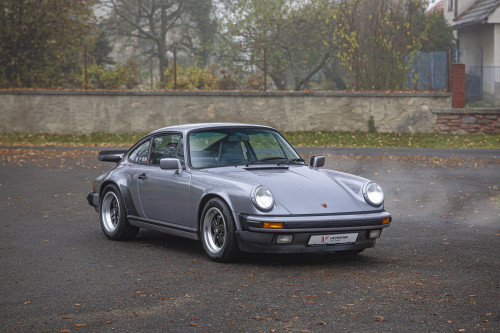Who else but Ferrari can make such a splash in the automotive world with each new model it releases. Such was the case—and perhaps the biggest splash yet—at the 1984 Paris Motor Show when the Italian carmaker debuted its radical Testarossa as a successor to the popular 512 BBi. The name means "red head" and was a throwback to the famed sports racing 250 Testa Rossa of the late 1950s. But the similarities stopped at the name.
The most recognizable features of the reborn Pininfarnina-styled Testarossa were the deep horizontal strakes that ran the length of both doors, feeding air into the side-mounted radiators. The world had never seen such a car, and it polarized those who saw it.
Power for the Testarossa came from a mid-mounted, 4.9-liter, 48-valve, flat-12, which produced 380 horsepower and 480 Nm of torque—enough to propel the car to 100 kmh in just over five seconds and on to a top speed just shy of 290 kmh. A five-speed gearbox put all that power to the rear wheels, and suspension was independent all around, with unequal-length upper and lower A-arms, coil springs, hydraulic shocks, and anti-roll bars. Big ventilated disc brakes completed the mechanical package.
Even at 1,660 kilograms, the Testarossa was a nimble, forgiving machine, and the motoring press praised it for its road manners. Not much changed on the Testarossa during its seven-year production. While originally fitted with only a two-stemmed driver's side outside mirror mounted half way up the A-pillar, in 1987 it was moved to the A-pillar base and a passenger mirror was added.
After more than 7,000 cars had been built, production concluded at the end of 1991, and the Testarossa gave way to the 512 TR.
Like the Lamborghini Countach, the Testarossa embodies the flash of the 1980s, and it became something of a cultural phenomenon, most notably as the "co-star" of the "Miami Vice" television series, also starring on the poster-lined walls of millions of young men. To this day it remains a polarizing car, and unmistakable from almost any angle.
The most valuable and most sought after are the first production year Monospecchio and Monodado examples as is this one.
This US example is after a fresh renovation in 2019 with the last engine-out service done in this year and has also a new clutch. It has a complete service book with the Carfax confirming the mileage. Original manuals are included. The car has a Czech historic car registration.
| Production date | 01.11.1985 |
|---|---|
| Body Type | Coupe |
| Engine | 4.943 ccm, 385 PS, V12 |
| transmission | Manual |
| Steering | Left Hand Drive |
|---|---|
| Layout | Rear Wheel Drive |
| Color - exterior | Red |
| Color - interior | Beige |
| Miles/Kilometers shown | 61.848 mls |
|---|---|
| Chassis / VIN | ZFFSA17A2G0061131 |
| Location - Country | Czechia |
| Location - City | Hradec Kralove |
2-door coupe body type; RWD (rear-wheel drive), manual 5-speed gearbox; gasoline (petrol) engine with displacement: 4943 cm3, advertised power: 283 kW / 380 hp / 385 PS (SAE net), torque: 480 Nm; characteristic dimensions: outside length: 4485 mm, width: 1976 mm, wheelbase: 2550 mm; reference weights: base curb weight: 1660 kg; top speed: 291 km/h (181 mph) (declared by factory); accelerations: 0-60 mph 5.8 s, 0-100 km/h 6.1 s (declared by factory)

Písek, CZ

Písek, CZ

Písek, CZ

Písek, CZ

Písek, CZ

Písek, CZ